SYM-PAC how to : two core methods for Discount Matrix Setup
Some important choices for setting up discount structures in SYM-PAC
Discount Matrix Setup options : two core methods
There are a number of ways to set up discount structures in the SYM-PAC System — we’ve outlined here the two main methods to guide you in setting these up.
Discount Method 1 : Customer Debtor Groups
Discount structures work best when customers are put into Debtor Groups, or Customer Groups.
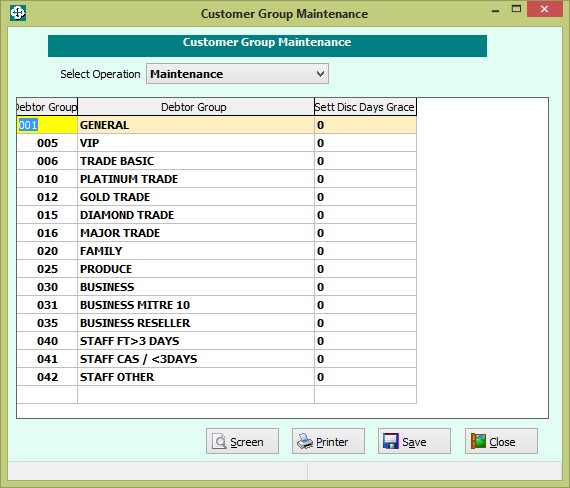
Customer Groups or Debtor Groups [above]
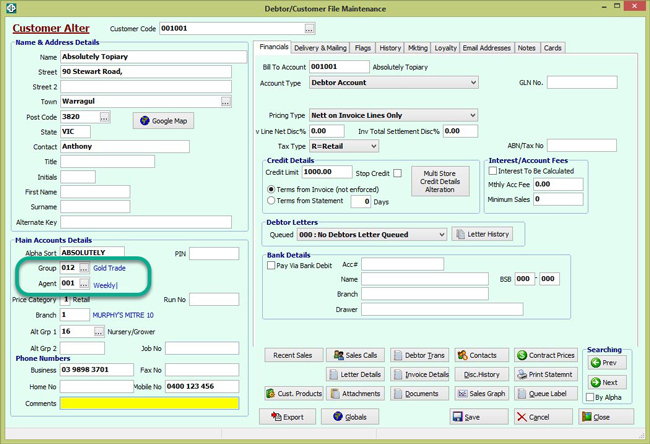
Now the groups are set, you can begin to review how you wish to apply discounts to your groups of customers.
Discount by Department by Customer Group
Discounts can be set by Department and not *all* departments need to be included.
You can selectively review which departments you wish to apply discounts to by group. At this point you can nominate:
- The Price method
- The price to use
- The percentage along with Cost to use.
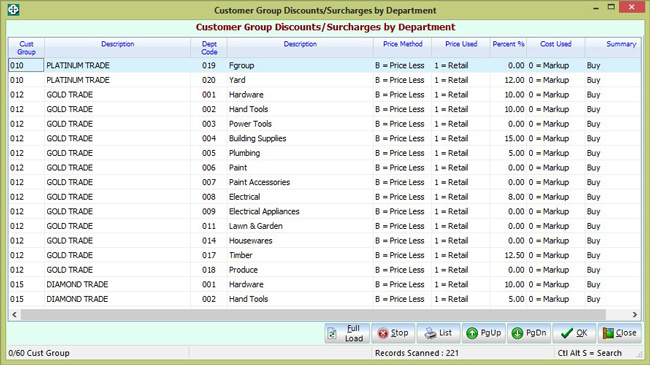
Discounts by FLC by Customer Group
Discounts by FLC (Fineline Class) can be inserted for FLC within in a department — where better pricing can be given.

So in the example shown, for the Hardware department, the Group ‘Gold Trade’ get 10% off retail, however for FLC’S shown in the list above — ‘Non Ferrous Wire Nails’, ‘Galvanized Wire Nails’, and so on — they get 20% off retail.
This method allows you to give more discount where there is more retail margin.
Max Discount by Product
The ‘Max Discount’ function within SYM-PAC is used to control the amount of discount that is able to be given for any given product.
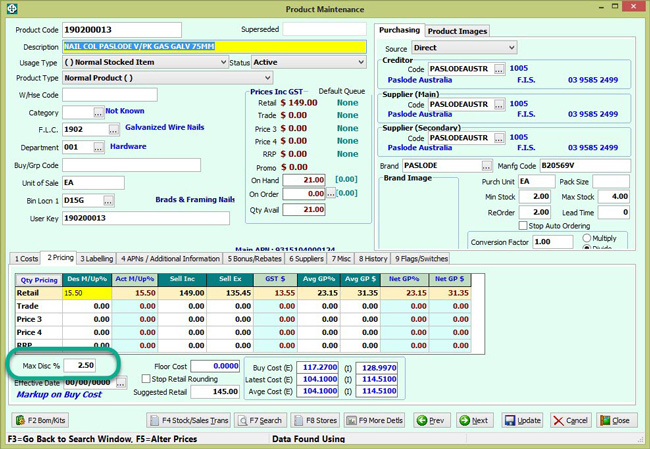
The Product Maintenance screen above shows the Max Discount to be given — regardless of discount structures in place.
So, the Hardware department has a discount of 10% off retail for Gold Trade group — however on this specific product, that group will only get 2.5%.
Contracts
Contracts can be set on a range of products that a customer or a group of customers will buy in volume.
All other products would fit into Discounts by department and or Discounts by FLC.
Contract pricing always wins.
Contracts can be set for a Customer, or Global Contracts can be built, and Groups of Customers are then attached to these contracts — see below.

Showing a customer linked to a Global Contract [above]

Screen shot showing a Group of Customers attached to a Global Contract [above]
Global Contracts are best practice
Global Contracts are best practice as there is one contract to maintain for several customers — rather than several individual Contracts.
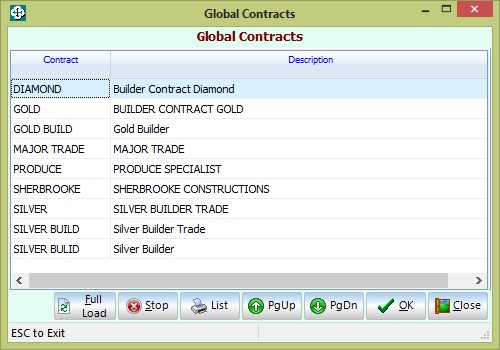
Screen shot showing Global Contracts [above]
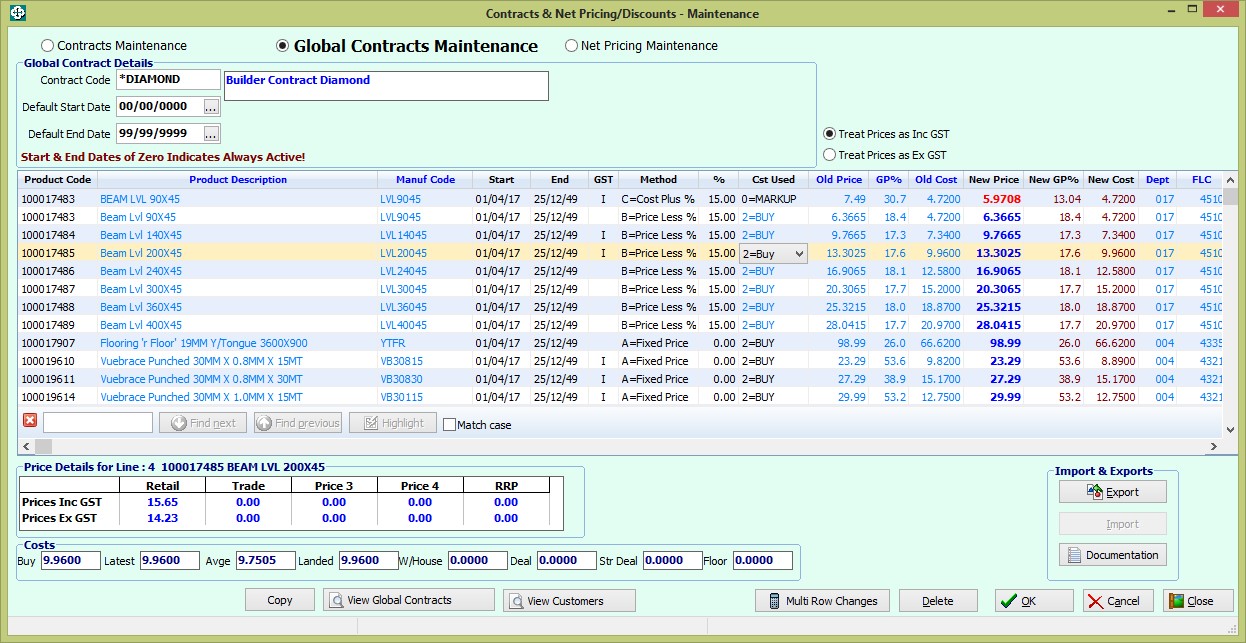
Screen shot showing Contents of a Global Contract [above]
Contracts can be set either as Fixed Price , Retail Less or Cost Plus, best practice is Cost Plus and Retail Less as they are maintained automatically as costs or retails change in the system.
Here’s an example of how this works.
Customer Group Gold Trade would have a Contract Pricing, then for Department 01 Hardware they may be on Retail less 10% and on FLC for Nails they may be on Retail less 20% — unless 3” Gun Nails have a Max Discount of 2.5% because the day to day is set low to compete.
If a contract product was to then fall within FLC Nails, the contracted price would win regardless.
> Summary for building Method 1 discount structures:
- 1. Build your customer groups
- 2. Build your Contracts and assign Customers and Customer Groups to the Contract
- 3. Build your Discount Structure by Department by Customer Groups
- 4. Build your Discount Structure by FLC BY Customer Group
- 5. Decide which products will have a Max Discount
- 6. Finally assign Customers to their Group
Discount Method 2 : Discounts based on GP%
This method allow you to set discounts based on GP% this method still works by assigning customers to a group, and then setting discounts based on GP% by groups.

Screen shot showing Group by GP% discounts this method is self-maintaining and looks at the GP% on the product them applies the discount based on GP.This method applies a discount based on GP% to all products across the product file, unless a contract is built to excluded departments see example below.

> Summary Method 2 : using GP%
- 1. Build your customer groups
- 2. Build your Contracts and assign Customers and Customer Groups to the Contract
- 3. Build Contracts for Department Exclusions
- 4. Build discount structure by Customer Group by GP%
- 5. Finally assign Customers to their Group
Give it a go today!
For more information on setting up the options for the Discount Matrix in your SYM-PAC system, contact Client Services on 1300 361 732.





